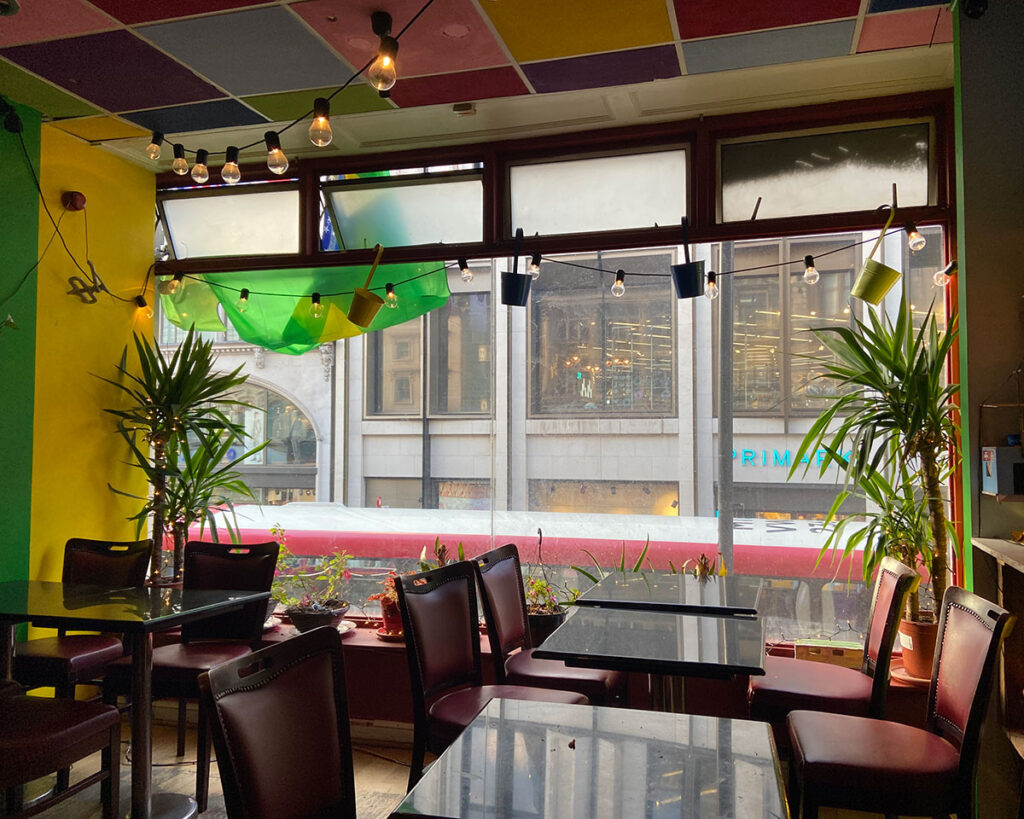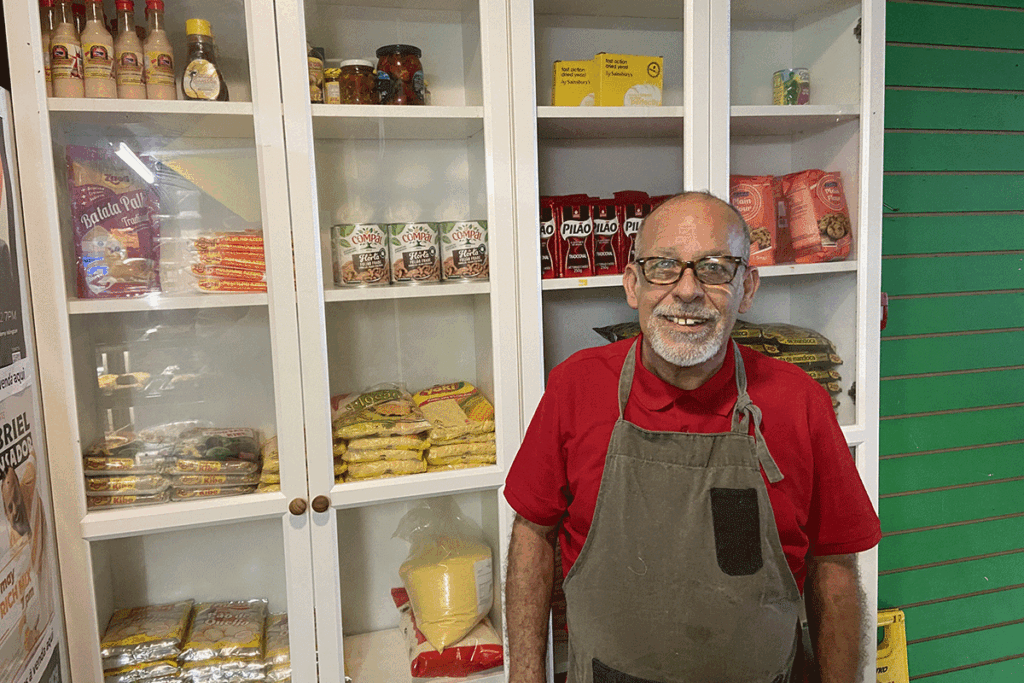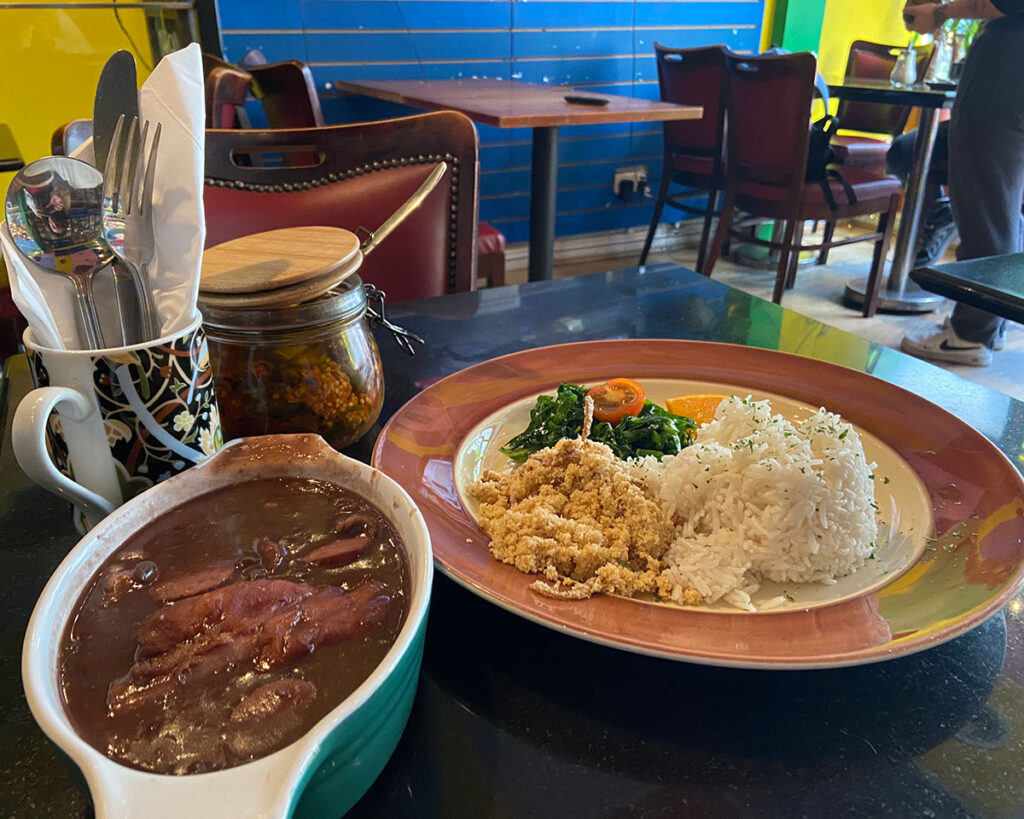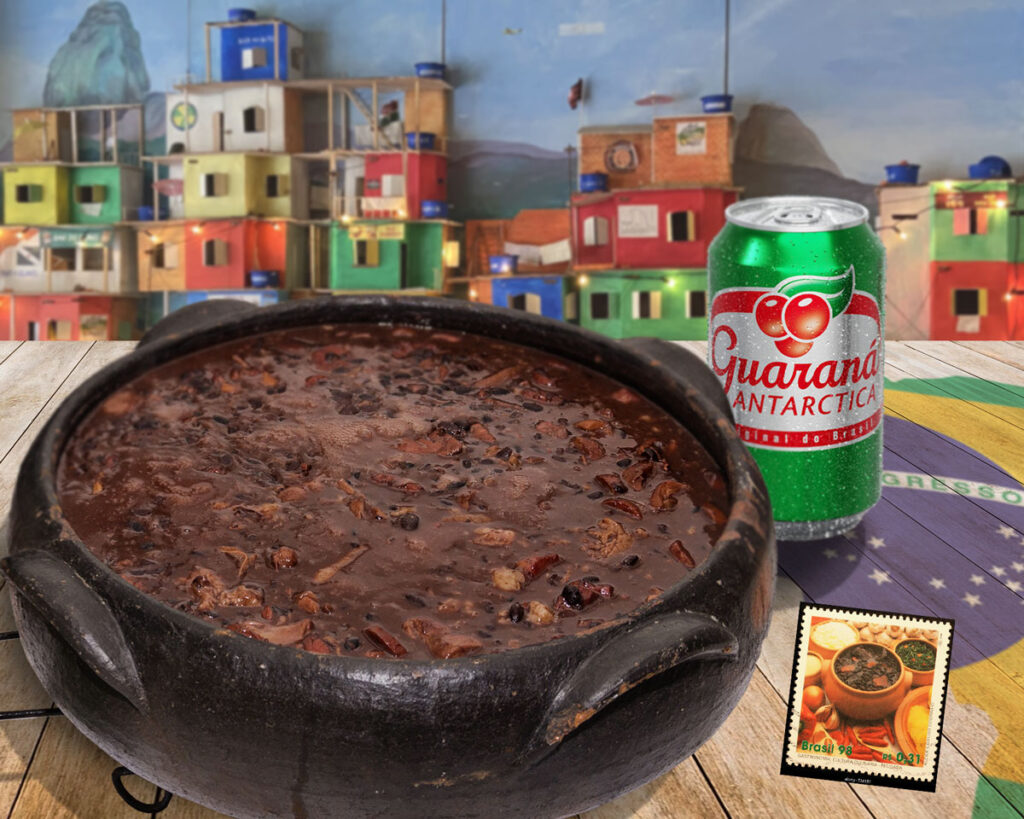Feijoada, a rich, meaty stew packed with black beans, pig ears and feet, is the national dish of Brazil. My father is from Brazil. I visited the country many times growing up, but never had it cooked for me. That was true, until last week.
Exploring authentic Brazilian food has always interested me. I wanted to learn more about feijoada: why it is so special to people in Brazil, but also know what it really tastes like. In my head, I imagined a thick stew with a lot of salt. I also wondered whether I would actually like it.
Growing up, I travelled to Brazil a lot to visit family and take in the rich culture. I remember eating a lot of Brazilian street food, like coxinha and pão de queijo; dishes I still love today. However, when we had home cooked family meals with my grandparents, the meals would be cooked by a nanny. I always found this a little strange, but I didn’t think much of it when I was younger. Despite feijoada being the national dish, I never came across it during my time in Brazil. My dad never cooked it at home when I was growing up or mentioned it. Only now, after doing my own research, have we discussed it. My dad said that he ate feijoada a lot as a kid, but it would always be cooked by his nanny. “I don’t like it,” he told me. I wasn’t going to let that stop me.
Feijão is Portuguese for beans. Since the 19th Century, the bean plant has been a staple in food cooked by the people in Brazil. As the Brazilian motto says: “there is no meal without beans, only beans satisfy one’s hunger.” The traditional dish is a black bean stew, cooked with a variety of salted and smoked pork and beef products. The more traditional feijoada also includes pig offal like ears, feet, tail and tongue.
The origins of the dish are uncertain. Stew has been regarded as central to European dishes for centuries, and feijoada is no different. The dish was widely cooked in Portugal and was reportedly brought over from Europe to Brazil in the 1500s. It has also been reported that the dish was invented by slaves on sugar cane plantations, who made use of the pig off-cuts not used by their masters, cooking them with black beans in a stew. This is the tale my dad believes. The main source of debate is whether the offal was appreciated by Europeans at the time, rather than considered as waste. The history of both tales’ highlights the longevity and impact this dish has on Brazilian people.
Feijoada is traditionally eaten on Wednesdays for lunch, on Saturdays or for special occasions. I decided to eat feijoada on a Wednesday afternoon and visited Feijo do Luis, a traditional Brazilian restaurant that sits above a phone shop on Oxford Street. It can only be accessed via a flight of stairs inside the shop. A Brazilian flag hangs outside the window.
Walking through the phone shop was strange. Not an inch of space was wasted; phone cases, chargers and vape pens filled my vision. It was sensory overload. Upstairs could not have been more different – it was charmingly low key. The sound of the TV, showing the Brazilian news, hummed in the background. Seating was limited, for just over a dozen diners, and the kitchen was small but practical. I could imagine the nanny preparing dinner there, while my family squeezed into the place. It felt like home.

I was greeted by the Chef, Giovanni Ferrari. I used the little Portuguese I know to greet him back. The owner, Luiz de Souza, then joined us. Souza, 66, came to London in 1985 and first started working in Italian restaurants. He went on to own an Italian ice cream van and a caramelised peanuts trolley that was parked on Oxford street. A lot of Brazilian people living in London started to ask him where the Brazilian restaurants or cafés are, but there weren’t any at the time. Souza and his wife decided to start one. They found a small place, near Oxford Street, inside a 24-hour supermarket with a small kitchen at the back. He began renting it and started selling coxinha, cheese bread and feijoada.
Souza enjoyed serving feijoada but he was financially struggling. The 1998 World Cup became an unlikely lifeline. “So many Brazilians were asking where they could watch the game and I didn’t know anywhere,” he said. Souza found a café located on the University College London campus. It became a meeting point to watch the football games, and he could sell his feijoada. The café was often over capacity, with some games attracting over 700 fans. “I became quite well known and the Brazilian news came and did an article about me. I became famous like that just because of the World Cup,” he said.

Souza rebounded financially and has since opened six cafes and restaurants, including Feijo do Luis. Souza has such a passion for feijoada and serving people his food. “I cannot live without it,” he says. Souza grew up in Rio de Janeiro and learned how to cook the traditional version of feijoada from his mother. “When I miss home and I miss my culture, it is through my stomach that I feel this. There is nothing, no golden credit card, that can magically get you what you want, so you have to find it. This is the place you can find it,” he says.
Today, feijoada is typically cooked with black beans, although this varies in different states across Brazil. In Rio de Janerio and the state of Minas Gerais, they use black beans, but in the state of Bahia, red or brown beans are preferred. In Bahia, it’s usual to add vegetables such as plantain, or root vegetables like potatoes, carrots or pumpkin. For the rest of Brazil, the feijoada is only beans and meat. Souza’s feijoada is made fresh every day, with ingredients sourced from local Brazilian businesses.
Ferrari told me about the Brazilian phrase ‘comida afetiva’ which translates to ‘cooking with affection’. He says the food cooked at Feijo do Luis abides to this, just like how Brazilian mothers cook. He wants to keep this tradition of cooking because he wants his children to have the same memories that he made with his mother, aunties and grandmother. Ferrari uses a steam pot to cook the feijoada – this way, the flavour is kept in as less water evaporates. He uses Calabrian pepper and paprika along with fresh onions, garlic, parsley, spring onions and coriander. He doesn’t use too much salt and keeps a watchful eye on Souza, who has heavy hand with salt.
Now it was my turn to try feijoada for the first time. The thick, meaty stew stuffed with pig ears and trotters daunted me. Was there a reason my dad never ate this? Despite how it looked, the smell was enticing, comforting and familiar. I felt like I had gone back in time and was sat with my grandparents in Brazil. Ferrari placed the feijoada in front of me. Accompanying the dish was a plate of rice and cassava flour – a starchy powder made from the cassava root plant – cooked with onions and cabbage, along with a slice of tomato and orange: the traditional way feijoada is served. To drink I had Guaraña; a fizzy, fruity wonder I loved growing up.
The feijoada was delicious. The pork loin was tender, and the sausage smoky in flavour. The sauce was rich and warming, but, like Souza said, the best part was the beans; I could have happily just had those, and it still would have been fantastic. Feijoada is definitely something I could not eat every day – for that I would need another stomach.

Belly full, I left Feijo de Luis feeling content about feijoada and hearing the wonderful tale of Souza’s life and what the dish means to him. When I think about the cooking that I’ve learned from my parents, nothing authentically Brazilian comes to mind. In fact, most of the food that I’ve learnt to cook has come from myself. I wish I held the same huge significance to a dish and had traditional food taught to me. Yet as I stepped out of the restaurant that felt so warm and reminded me so much of home, onto the crazy busy streets on London, I felt I had experienced such a special and fulfilling moment. I knew that this would be something I could hold onto and cherish in my heart, and my belly. It also won’t stop me from making traditions of my own in the future.

